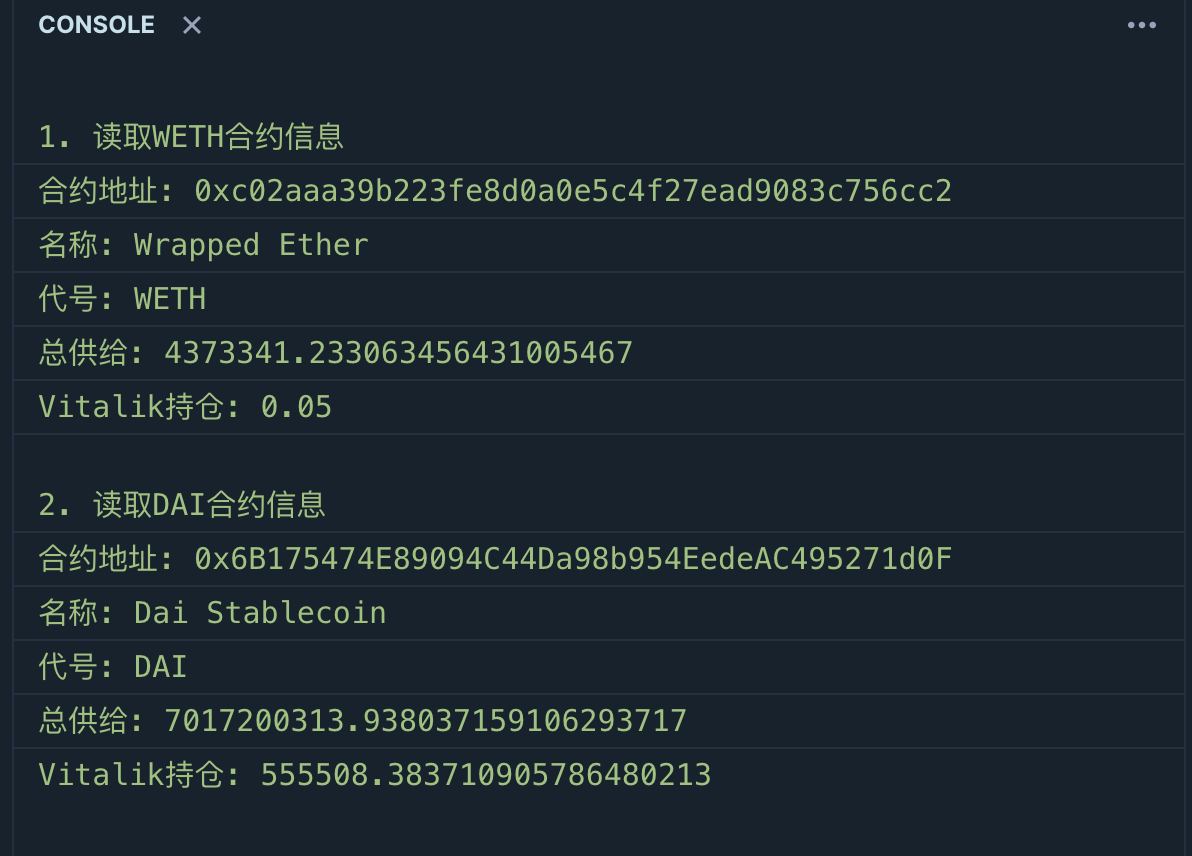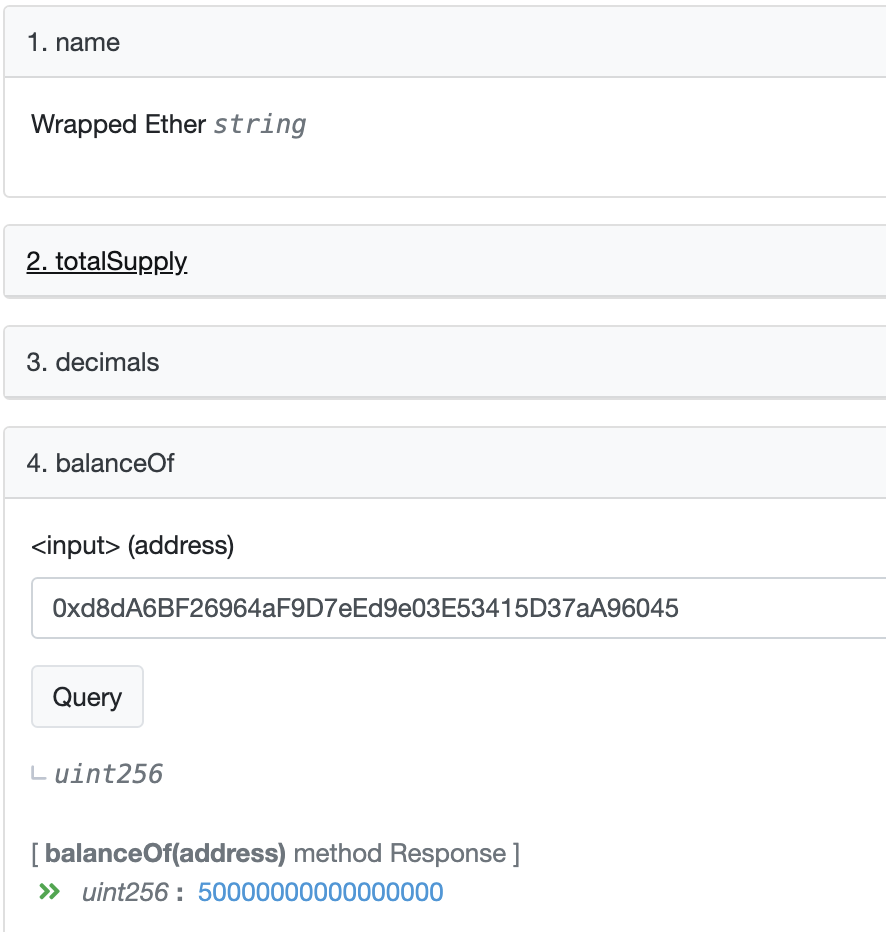WTF Ethers: 3. Read Contract Information
I've been revisiting ethers.js recently to refresh my understanding of the details and to write a simple tutorial called "WTF Ethers" for beginners.
Twitter: @0xAA_Science
Community: Website wtf.academy | WTF Solidity | discord | WeChat Group Application
All the code and tutorials are open-sourced on GitHub: github.com/WTFAcademy/WTF-Ethers
In this lesson, we will introduce the Contract class and use it to read information from contracts on Ethereum.
The Contract Class
In ethers, the Contract class is an abstraction of contracts (EVM bytecode) deployed on the Ethereum network. Through it, developers can easily read (call) and transact with contracts, as well as obtain transaction results and events. The power of Ethereum lies in its contracts, so it is essential to have a good understanding of contract operations.
Creating a Contract Variable
Read-only and Read-write Contracts
Contract objects can be divided into two types: read-only and read-write. Read-only Contract objects can only read contract information on the chain by executing call operations, which involve calling the view and pure functions in the contract. They cannot perform transaction operations. The methods of creating these two types of Contract variables are different:
- Read-only
Contractvariable: The parameters are the contract address, contractabi, andprovidervariable (read-only).
const contract = new ethers.Contract(`address`, `abi`, `provider`);
- Read-write
Contractvariable: The parameters are the contract address, contractabi, andsignervariable. TheSigneris another class inethersthat is used for signing transactions, which we will cover later.
const contract = new ethers.Contract(`address`, `abi`, `signer`);
Note: In ethers, the call operation refers to a read-only operation, which is different from the call in Solidity.
Reading Contract Information
1. Creating a Provider
We will use the Alchemy node's API Key to create a Provider:
import { ethers } from "ethers";
// Connect to the Ethereum network using the Alchemy RPC node
// Prepare alchemy API, refer to https://github.com/AmazingAng/WTFSolidity/blob/main/Topics/Tools/TOOL04_Alchemy/readme.md
const ALCHEMY_MAINNET_URL = 'https://eth-mainnet.g.alchemy.com/v2/oKmOQKbneVkxgHZfibs-iFhIlIAl6HDN';
const provider = new ethers.JsonRpcProvider(ALCHEMY_MAINNET_URL);
2. Creating a Read-only Contract Instance
To create a read-only contract instance, we need to provide three parameters: the contract address, contract abi, and provider variable. The contract address can be found online, and we have already created the provider variable in the previous step. But how do we fill in the abi?
ABI (Application Binary Interface) is the standard for interacting with Ethereum smart contracts. For more information, refer to WTF Solidity Tutorials Lesson 27: ABI Encoding. ethers supports two ways of providing abi:
- Method 1: Directly input the contract
abi. You can copy it from the compilation page of Remix, generate it locally when compiling contracts (located in theartifactfolder), or obtain it from the code page of an open-source contract on Etherscan. We will use this method to create an instance of theWETHcontract:
// Method 1: Copy the full abi
// You can copy the WETH abi from here: https://etherscan.io/token/0xc02aaa39b223fe8d0a0e5c4f27ead9083c756cc2#code
const abiWETH = '[{"constant":true,"inputs":[],"name":"name","outputs":[{"name":"","type":"string"}],"payable":false,"stateMutability":"view",...omitted for brevity...]';
const addressWETH = '0xc02aaa39b223fe8d0a0e5c4f27ead9083c756cc2' // WETH Contract
const contractWETH = new ethers.Contract(addressWETH, abiWETH, provider)

- Method 2: Since the readability of
abiis poor,ethersintroduces an innovative approach calledHuman-Readable Abi. Developers can writeabiusingfunction signatureandevent signature. We will use this method to create an instance of the stable coinDAI:
// Method 2: Input the functions needed for the program, separated by commas. ethers will automatically convert them into the corresponding abi for you.
// Human-readable abi, using the example of an ERC20 contract
const abiERC20 = [
"function name() view returns (string)",
"function symbol() view returns (string)",
"function totalSupply() view returns (uint256)",
"function balanceOf(address) view returns (uint)",
];
const addressDAI = '0x6B175474E89094C44Da98b954EedeAC495271d0F' // DAI Contract
const contractDAI = new ethers.Contract(addressDAI, abiERC20, provider)
3. Reading on-chain information of WETH and DAI
We can use the read-only Contract instance to call the view and pure functions of the contract to obtain on-chain information:
const main = async () => {
// 1. Reading on-chain information of the WETH contract (WETH abi)
const nameWETH = await contractWETH.name()
const symbolWETH = await contractWETH.symbol()
const totalSupplyWETH = await contractWETH.totalSupply()
console.log("\n1. Reading WETH contract information")
console.log(`Contract address: ${addressWETH}`)
console.log(`Name: ${nameWETH}`)
console.log(`Symbol: ${symbolWETH}`)
console.log(`Total supply: ${ethers.formatEther(totalSupplyWETH)}`)
const balanceWETH = await contractWETH.balanceOf('vitalik.eth')
console.log(`Vitalik's balance: ${ethers.formatEther(balanceWETH)}\n`)
// 2. Reading on-chain information of the DAI contract (IERC20 interface contract)
const nameDAI = await contractDAI.name()
const symbolDAI = await contractDAI.symbol()
const totalSupplDAI = await contractDAI.totalSupply()
console.log("\n2. Retrieve DAI contract information")
console.log(`Contract Address: ${addressDAI}`)
console.log(`Name: ${nameDAI}`)
console.log(`Code: ${symbolDAI}`)
console.log(`Total Supply: ${ethers.formatEther(totalSupplDAI)}`)
const balanceDAI = await contractDAI.balanceOf('vitalik.eth')
console.log(`Vitalik's Balance: ${ethers.formatEther(balanceDAI)}\n`)
}
main()
As you can see, instances of contracts created using both methods can successfully interact with the blockchain. Vitalik's wallet contains 0.05 WETH and 555508 DAI, as shown in the figure below.

Explanation:
We can verify the balance of WETH in Vitalik's wallet and whether it matches the one read from the Contract using the Ethereum browser. By using ENS, we found that Vitalik's wallet address is 0xd8dA6BF26964aF9D7eEd9e03E53415D37aA96045. By using the balanceOf contract method, we obtained a balance of exactly 0.05 WETH. The conclusion is consistent!

Summary
In this lesson, we introduced the Contract class in ethers and created read-only Contract instances for WETH and DAI. We successfully read Vitalik's balances for these two tokens.